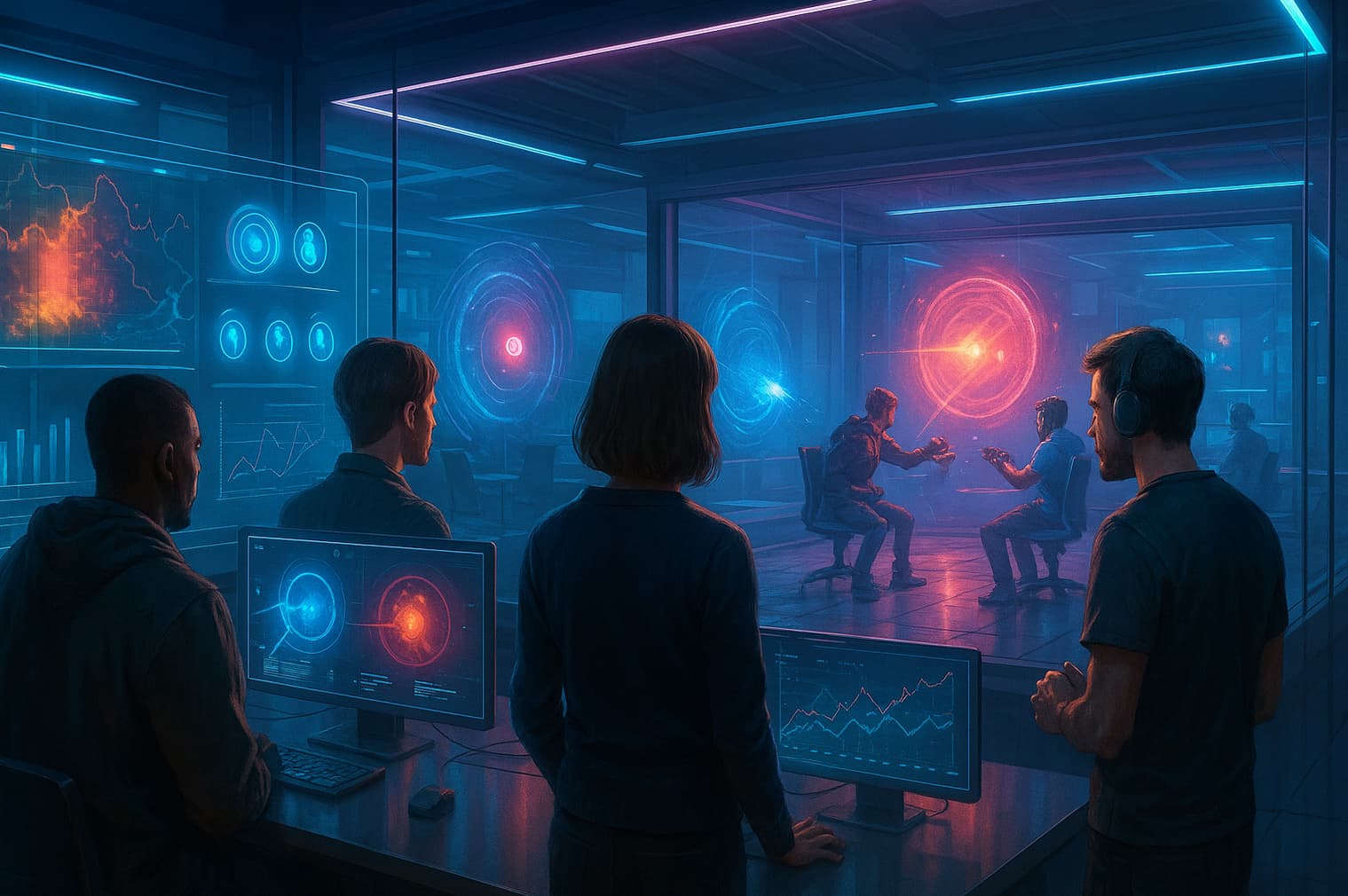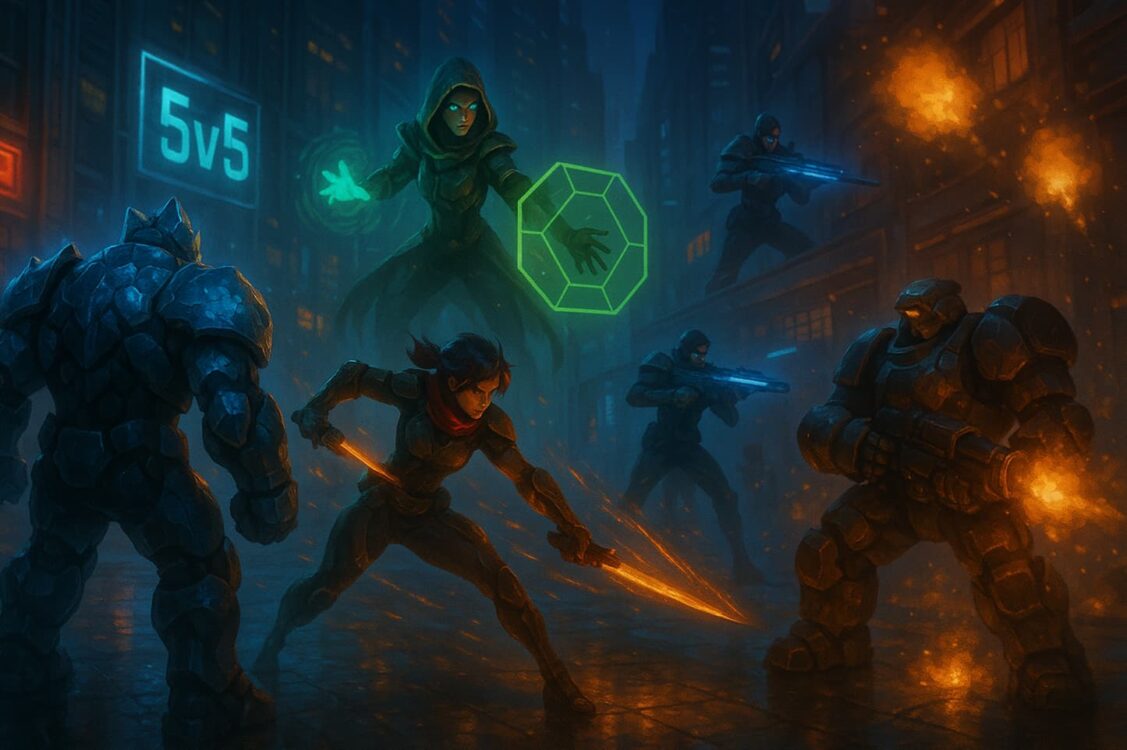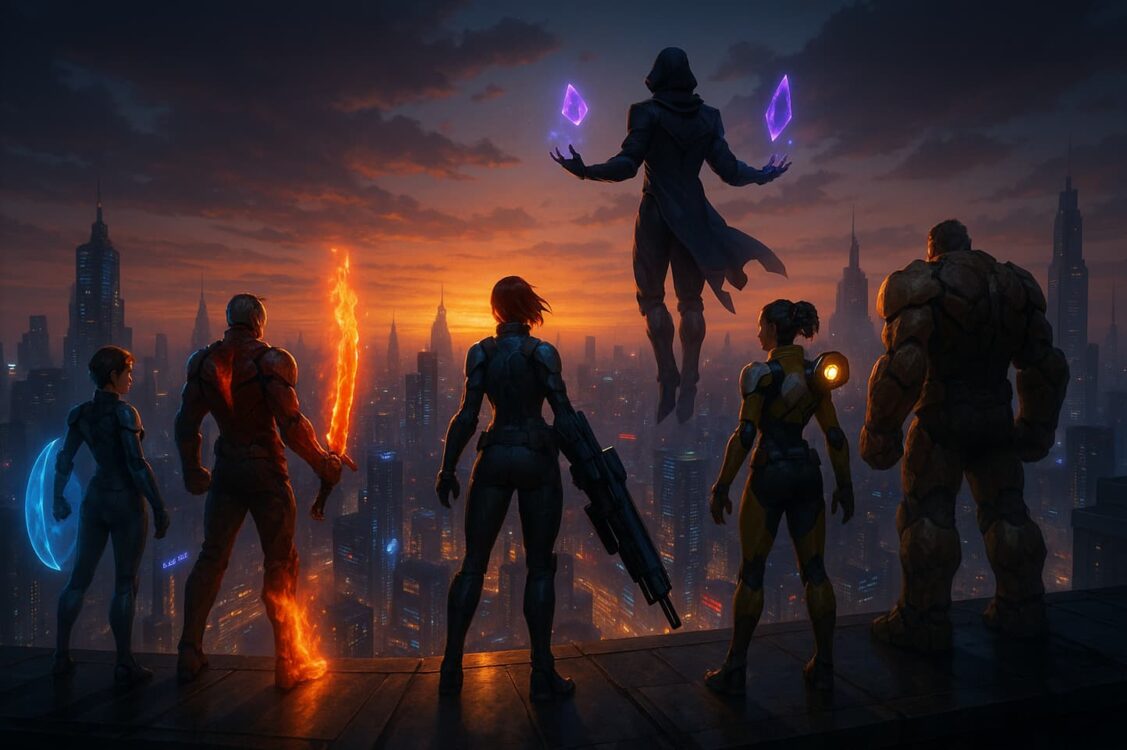
The hero shooter genre has exploded in popularity over the past decade, with games like Overwatch, Valorant, and Apex Legends dominating the competitive gaming landscape. Marvel Rivals, NetEase’s latest entry into this crowded market, offers valuable insights into what makes hero-based combat truly engaging.
As game developers at Devil Whiskey, we’ve analyzed Marvel Rivals’ approach to competitive balance to extract actionable lessons for studios creating their own hero shooter experiences. Understanding how Marvel Rivals achieves competitive balance isn’t just academic – it’s essential for any developer hoping to create a sustainable multiplayer experience.
The game’s success demonstrates that proper balance isn’t about making every character identical, but about creating meaningful choices where each hero serves distinct strategic purposes.
The Foundation of Hero Diversity
Marvel Rivals succeeds because it embraces the core principle that every hero should feel fundamentally different to play. Unlike traditional shooters that rely primarily on weapon variety, hero shooters must balance distinct abilities, movement patterns, and strategic roles while maintaining competitive integrity.
Role Definition That Actually Works
Each character in Marvel Rivals clearly fits into damage, tank, or support categories, but more importantly, they occupy specific tactical niches. Spider-Man excels at hit-and-run tactics with his web-slinging mobility, creating opportunities for quick eliminations before retreating to safety. Meanwhile, Hulk dominates through raw durability and area control, forcing enemies to either focus fire or surrender valuable map territory.
This approach prevents heroes from overlapping too heavily while ensuring each brings something unique to team compositions. Rather than having multiple characters who fill identical roles, Marvel Rivals creates distinct value propositions that make team selection feel strategic rather than arbitrary.
The Mathematics of Power Balance
Marvel Rivals achieves consistent power levels through what we call “equivalent exchange.” Heroes with higher damage output typically sacrifice survivability, while tankier characters trade raw damage for utility and crowd control. High-mobility heroes like Black Widow can reposition quickly but lack the sustained damage potential of more stationary characters.
The development team ensures that no single hero dominates across multiple performance metrics simultaneously. This creates natural trade-offs that keep team composition interesting and prevent any character from becoming universally optimal.
Building Counterplay Into Hero Design
Every hero in Marvel Rivals includes built-in strengths and weaknesses that create natural counter-relationships. Iron Man’s aerial positioning advantage becomes a liability against hitscan heroes like Punisher, who can track airborne targets with precision. Scarlet Witch’s powerful crowd control abilities lose effectiveness against highly mobile heroes who can escape her area-of-effect spells.
These interactions create dynamic gameplay where team composition and strategic adaptation matter more than individual mechanical skill alone. Players must consider not just their own hero’s capabilities, but how those abilities interact with both allied and enemy team compositions.
Balancing Offense and Defense
The most challenging aspect of hero shooter balance lies in creating engaging gameplay for both attacking and defending players. Marvel Rivals demonstrates several key principles that maintain competitive integrity across different game modes and map types.
Understanding Damage Scaling
Marvel Rivals follows predictable damage patterns that players can learn and adapt to, but with enough complexity to keep engagements interesting. Burst damage heroes like Scarlet Witch can eliminate enemies quickly with precise ability combinations, but they require perfect timing and positioning to execute successfully. Miss the combo window or get caught out of position, and these heroes become extremely vulnerable.
Sustained damage dealers like Iron Man excel in extended engagements where they can maintain consistent pressure over time. However, they struggle against coordinated focus fire that can overwhelm their defensive capabilities before they can retreat or receive support.
Distributed Defensive Capabilities
Rather than concentrating all defensive power in traditional tank roles, Marvel Rivals spreads defensive capabilities across multiple heroes and playstyles. While Hulk and Magneto offer obvious defensive utility through damage absorption and shields, heroes like Doctor Strange provide defensive value through area denial and utility spells that control engagement ranges.
This distributed defense model prevents any single hero from becoming mandatory for team success while ensuring that teams have multiple viable approaches to defensive play. It also creates more interesting strategic decisions about how to allocate defensive resources across different map areas and objectives.
Creating Meaningful Range Dynamics
Marvel Rivals creates natural spacing dynamics that prevent any single optimal engagement range from dominating gameplay. Close-range specialists like Wolverine excel in confined spaces where they can leverage their mobility and high damage output, but they struggle in open areas where long-range heroes can kite them effectively.
Long-range heroes like Hawkeye dominate open sightlines and can control large areas of the map, but they become extremely vulnerable to flanking maneuvers and close-range engagements. This creates a rock-paper-scissors dynamic where map control becomes about positioning teams to leverage their optimal ranges while denying enemies theirs.
The Psychology of Competitive Balance

Marvel Rivals’ success stems partly from understanding that balance isn’t just about mathematical equations – it’s about player perception and psychological satisfaction. The game implements several design principles that make balance feel fair even when significant differences exist between heroes.
Skill Expression Across Complexity Levels
Different heroes offer varied paths to mastery while maintaining competitive viability at all skill levels. High-complexity heroes like Spider-Man reward players who invest time learning intricate movement mechanics and ability combinations. His web-swinging system alone offers dozens of advanced techniques that separate novice players from experts.
Meanwhile, more accessible heroes like Hulk provide immediate satisfaction through straightforward but impactful abilities. New players can contribute meaningfully to team success without mastering complex mechanical skills, while experienced players discover deeper strategic applications for seemingly simple abilities.
Clear Communication Systems
Marvel Rivals provides comprehensive feedback that helps players understand why they succeeded or failed in specific engagements. Visual damage indicators clearly show the source and type of incoming damage, while audio cues distinguish between different ability types and threat levels. Cooldown timers and resource meters keep players informed about their tactical options at all times.
When players understand the systems governing their performance, they can adapt their strategies and improve their gameplay rather than attributing losses to balance issues or random chance.
Continuous Learning and Discovery
Even as players improve their mechanical skills, they continue discovering new applications for familiar abilities and deeper strategic considerations. This creates a sense of ongoing progression that keeps the game engaging long after players have mastered individual hero mechanics.
Given Marvel Rivals complex ranking system and emphasis on team coordination, many players turn to Marvel Rivals boosting to accelerate their competitive rank position. The game’s strategic depth means that understanding high-level gameplay patterns can significantly improve performance for aspiring competitive players.
Technical Implementation Excellence
From a development perspective, Marvel Rivals demonstrates several technical approaches that other studios should consider when implementing hero balance systems.
Data-Driven Decision Making
Marvel Rivals’ balance philosophy centers on comprehensive gameplay metrics rather than developer intuition or community feedback alone. The team tracks win rates across different skill brackets, pick rates in various game modes, and performance statistics for individual abilities and team compositions.
This data-driven approach ensures that balance changes address actual gameplay problems rather than perceived issues. It also prevents the development team from making knee-jerk reactions to vocal community complaints that might not represent broader player experiences.
Modular System Architecture
The game’s technical architecture allows for precise balance adjustments without requiring complete hero redesigns. Individual ability parameters, cooldown timers, and damage values can be modified independently while maintaining each hero’s core identity and player familiarity.
This modular approach enables rapid iteration and testing of balance changes. The development team can experiment with small adjustments to see their impact before committing to larger reworks, reducing the risk of disruptive changes that negatively affect the competitive experience.
Comprehensive Testing Infrastructure
Marvel Rivals maintains dedicated testing environments where proposed balance changes can be evaluated across different skill levels and team compositions before reaching live servers. This infrastructure includes both internal developer testing and community beta programs that gather feedback from experienced players.
The testing process also incorporates simulation tools that can model mathematical balance scenarios and identify potential edge cases that might not emerge during limited human testing periods.
Lessons for Game Developers
Marvel Rivals’ approach to competitive balance offers several actionable insights for studios developing their own hero shooter experiences.
Establish Clear Design Principles Early
Before creating individual heroes, successful studios establish fundamental design guidelines that govern all character development. These principles should define role clarity, counterplay opportunities, skill expression pathways, and team synergy expectations.
Marvel Rivals’ success stems from consistent adherence to established design principles rather than ad-hoc balance adjustments made in response to immediate problems. This consistency creates a coherent gameplay experience where players can develop intuitive understanding of how different elements interact.
Embrace Asymmetric Balance Philosophy
Rather than pursuing mathematical equality between heroes, successful hero shooters focus on creating situational advantages that make different characters feel powerful in their optimal circumstances while remaining vulnerable in others.
Players enjoy games where their chosen hero feels distinctly overpowered in specific situations, as long as those same heroes have clear weaknesses that skilled opponents can exploit. This asymmetric approach creates dynamic gameplay with shifting power balances based on map position, team composition, and tactical execution.
Plan for Long-Term Evolution
Hero shooters require continuous balance updates to maintain competitive integrity and player engagement over time. Studios must build technical infrastructure and community management systems that can support ongoing adjustments and improvements.
This includes not just the technical capability to deploy balance changes, but also the communication systems needed to explain changes to the community and gather meaningful feedback about their impact on gameplay.
Building Your Own Hero Shooter

At Devil Whiskey, we’ve applied these lessons from Marvel Rivals to help game studios create their own competitive hero shooter experiences. Our full-cycle development services encompass everything from initial balance design consultation to ongoing live service optimization.
Strategic Design Consultation
We work with studios during the early conceptual phases to establish robust balance frameworks before hero development begins. This includes creating role definition systems, establishing power level guidelines, and mapping counterplay relationships that will guide character creation throughout the development process.
Our consultation services also cover technical architecture planning, helping studios build the data collection and analysis infrastructure needed to support evidence-based balance decisions once their game launches.
Technical Implementation Excellence
Our engineering teams specialize in the technical systems that enable competitive gaming experiences. This includes low-latency networking architecture, comprehensive analytics integration, and the rapid iteration tools necessary for ongoing balance maintenance.
We also provide expertise in anti-cheat systems, performance monitoring, and the community management tools that successful live service games require to maintain healthy player communities over time.
Visual Clarity and Communication
Our art teams understand that competitive balance extends beyond numerical calculations to include visual communication systems. We specialize in creating hero designs that clearly telegraph gameplay mechanics while maintaining visual appeal and brand consistency.
This includes developing visual languages for ability effects, status indicators, and team identification that help players make split-second tactical decisions based on clear visual information.
The Future of Competitive Gaming
Marvel Rivals represents the current state of the art in hero shooter balance design, but the genre continues evolving as new technologies and player expectations emerge. Studios that understand and apply these fundamental balance principles will be better positioned to create engaging, sustainable multiplayer experiences that can compete in an increasingly demanding market.
Success in hero shooter development requires more than copying existing formulas. It demands deep understanding of player psychology, technical implementation excellence, and long-term service vision that can adapt to changing competitive landscapes while maintaining core gameplay integrity.
The combination of clear design principles, robust technical systems, and player-focused balance philosophy that Marvel Rivals demonstrates offers a proven framework for studios serious about creating competitive gaming experiences that can thrive in today’s market.